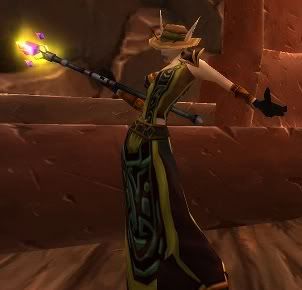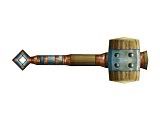Kirise
OG
Every XP-off bracket brings an interesting mix of features to World of Warcraft PvP. Depending on player preferences, friendships, rivalries, and bracket mechanics, games can thrive or wane during any given patch. After participating (to some degree) in several initiatives to kick-start brackets, seeing successes and failures taught me some important lessons about establishing XP-off brackets. This series of three articles will detail what it takes to prep a bracket, launch and sustain its growth, and transition the bracket to self-propelled success.
My participation in various brackets varies. If I excessively oversimplified a situation or left out important details, do say so in the comments section. With that said, let's discuss how to bring an XP-off bracket to life.
I. Prepping a Bracket
1. Assess your Foundation. An XP-off bracket without games starts from one of three situations. Either the bracket played games at one time and is currently dormant, the bracket experienced a fundamental change and went dormant, or the bracket never had games before. Each situation brings advantages and disadvantages.
Dormant brackets that played games in the past mean that chances are good several players (possibly more) have characters ready for games, making it easier to raise interest in restarting the bracket. There's also a chance that if word spreads about reviving a dormant bracket, veteran players will reach through their informal networks to pique the interest of other bracket veterans. However, reviving a dormant bracket also involves learning the history of the bracket. If you do not learn what previously shut down a bracket, you may set yourself up to fail when you encounter the same problem again. Many of the midbrackets (29, 39, 49, 59) experienced varying degrees of success and failure based on the interest of veteran players, and how well brackets managed their history.
Brackets that experienced fundamental changes bring a different set of challenges. Some bracket veterans may be interested in seeing the bracket come to life, but without knowing what to expect, initial interest won't reach as high as established brackets. Likewise, bracket history can help or hinder, depending on how the previous form of the bracket ran. 10s got severed from the 19 bracket and put into their own 10-14 bracket, and 69s went dormant after getting severed from the large number of 60s who never upgraded from Vanilla WoW.
Very rarely do we see the opportunity for new brackets to appear, and Blizzard's bifurcation of PvP brackets last year did exactly that. The x4 midbrackets (34, 44, 54) have no previous players, and no history. Without some sort of impetus from Blizzard's design (e.g. the 20-24 bracket quickly materialized after Blizzard offered free accounts that capped at 20), getting a new bracket started takes considerably more time and effort.
2. Provide information resources. Every potential new (or returning) player asks three questions in some form. What is the best gear for my class and spec? How competitive can I be compared to other classes and specs? How easily can I start participating?
When discussing best gear, players respond best to two forms of information: gearlists and armories/chardevs. Theorycrafting is fun for the few who enjoy it, but the vast majority of players just want to build their twinks and get on the field. Some players like to go gear shopping from gearlists. Gearlists need not be complete, but should contain either a small range of items for each slot (ranging from survivability to glass cannon), or an explanation as to why a certain item in a slot is clearly best over all other options. Other players prefer to model themselves off the "big picture" of existing armories and chardevs, and the more you can supply, the better.
The toughest question to answer is, how competitive is my class and spec? Am I ridiculously overpowered, hopelessly underpowered, or average? Drastically varying player skill and differing matchups can make this question hard to answer. Instead of trying to determine which classes are best and worst, answer the question in terms of what the class can offer. Does the class have strong or weak dps? Better at burst, or sustained damage? Good or bad survivability? High or low mobility? Will a player do better to plunge into battle or hit/heal from a distance? Bracket history can help answer some of these questions, while fresh brackets or brackets that stayed dormant for a long time can only guesstimate based on the brackets around them and what the stats and abilities imply for a given class and spec.
The final question sounds much more simple than it really is. How easily can I start participating? The obvious part of the answer asks what kinds of activities does the bracket start with, and how often do they happen. Wargames? Duels? Will we actually get WSG pops once a week or more? But the less obvious part of the answer concerns when a player can effectively join in those activities. The 70-74 bracket exploded in popularity in part because the bracket features the lowest barrier to entry for most classes and specs. PvP before you reach 70, ding, turn off XP, and use your honor points to go buy your brutal PvP set from a vendor to get you onto the field. Contrast this with the other extreme: grinding out a gearset for the 49 or 80-84 brackets will take a considerable time investment, and getting on the field at anything less than 90% complete can render you ineffectual in such high-burst brackets.
Once you know a bracket's history (or lack thereof), and have at least some information ready for interested players, you have prepped the bracket for launch. For entrepreneurial players, a bracket launch brings some of the most interesting, challenging, and rewarding parts of the game. But a good prep doesn't necessarily lead to a successful launch. The next article in this series will explore how to market the bracket, establish and grow bracket activity, and work with the day-to-day life of the bracket in the "early days" of its growth. Stay tuned!
My participation in various brackets varies. If I excessively oversimplified a situation or left out important details, do say so in the comments section. With that said, let's discuss how to bring an XP-off bracket to life.

|
| Song and dance help, but you'll need more. |
1. Assess your Foundation. An XP-off bracket without games starts from one of three situations. Either the bracket played games at one time and is currently dormant, the bracket experienced a fundamental change and went dormant, or the bracket never had games before. Each situation brings advantages and disadvantages.
Dormant brackets that played games in the past mean that chances are good several players (possibly more) have characters ready for games, making it easier to raise interest in restarting the bracket. There's also a chance that if word spreads about reviving a dormant bracket, veteran players will reach through their informal networks to pique the interest of other bracket veterans. However, reviving a dormant bracket also involves learning the history of the bracket. If you do not learn what previously shut down a bracket, you may set yourself up to fail when you encounter the same problem again. Many of the midbrackets (29, 39, 49, 59) experienced varying degrees of success and failure based on the interest of veteran players, and how well brackets managed their history.
Brackets that experienced fundamental changes bring a different set of challenges. Some bracket veterans may be interested in seeing the bracket come to life, but without knowing what to expect, initial interest won't reach as high as established brackets. Likewise, bracket history can help or hinder, depending on how the previous form of the bracket ran. 10s got severed from the 19 bracket and put into their own 10-14 bracket, and 69s went dormant after getting severed from the large number of 60s who never upgraded from Vanilla WoW.
Very rarely do we see the opportunity for new brackets to appear, and Blizzard's bifurcation of PvP brackets last year did exactly that. The x4 midbrackets (34, 44, 54) have no previous players, and no history. Without some sort of impetus from Blizzard's design (e.g. the 20-24 bracket quickly materialized after Blizzard offered free accounts that capped at 20), getting a new bracket started takes considerably more time and effort.

| The Windstorm Hammer, possibly the first-ever grandfathered twinker item (patch 2.3). Image from www.mmodb.com. See also WoWhead's entry. |
When discussing best gear, players respond best to two forms of information: gearlists and armories/chardevs. Theorycrafting is fun for the few who enjoy it, but the vast majority of players just want to build their twinks and get on the field. Some players like to go gear shopping from gearlists. Gearlists need not be complete, but should contain either a small range of items for each slot (ranging from survivability to glass cannon), or an explanation as to why a certain item in a slot is clearly best over all other options. Other players prefer to model themselves off the "big picture" of existing armories and chardevs, and the more you can supply, the better.
The toughest question to answer is, how competitive is my class and spec? Am I ridiculously overpowered, hopelessly underpowered, or average? Drastically varying player skill and differing matchups can make this question hard to answer. Instead of trying to determine which classes are best and worst, answer the question in terms of what the class can offer. Does the class have strong or weak dps? Better at burst, or sustained damage? Good or bad survivability? High or low mobility? Will a player do better to plunge into battle or hit/heal from a distance? Bracket history can help answer some of these questions, while fresh brackets or brackets that stayed dormant for a long time can only guesstimate based on the brackets around them and what the stats and abilities imply for a given class and spec.
The final question sounds much more simple than it really is. How easily can I start participating? The obvious part of the answer asks what kinds of activities does the bracket start with, and how often do they happen. Wargames? Duels? Will we actually get WSG pops once a week or more? But the less obvious part of the answer concerns when a player can effectively join in those activities. The 70-74 bracket exploded in popularity in part because the bracket features the lowest barrier to entry for most classes and specs. PvP before you reach 70, ding, turn off XP, and use your honor points to go buy your brutal PvP set from a vendor to get you onto the field. Contrast this with the other extreme: grinding out a gearset for the 49 or 80-84 brackets will take a considerable time investment, and getting on the field at anything less than 90% complete can render you ineffectual in such high-burst brackets.
Once you know a bracket's history (or lack thereof), and have at least some information ready for interested players, you have prepped the bracket for launch. For entrepreneurial players, a bracket launch brings some of the most interesting, challenging, and rewarding parts of the game. But a good prep doesn't necessarily lead to a successful launch. The next article in this series will explore how to market the bracket, establish and grow bracket activity, and work with the day-to-day life of the bracket in the "early days" of its growth. Stay tuned!
Last edited by a moderator:
